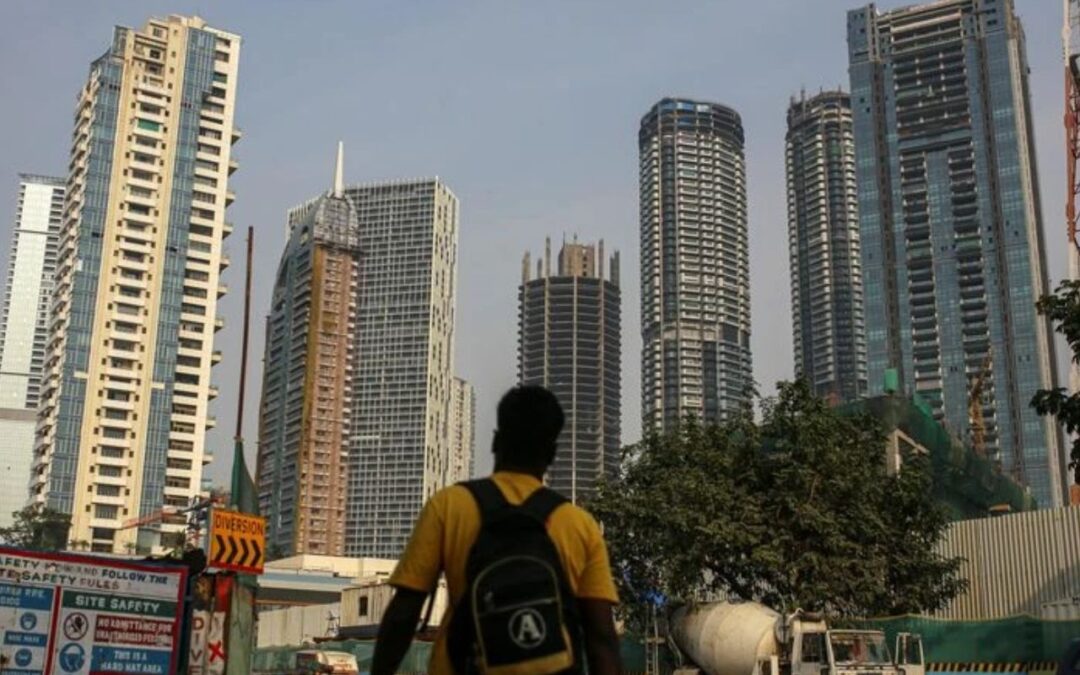Synopsis– The housing market in India in 2025 has become somewhat exceptionally unaffordable, not only due to rising raw material costs, but due to various other challenges. Housing affordability for a typical Indian, with a PTI of 11.1, is well beyond global norms in affordability. As a result, homeownership is a distant dream for an average Indian.
India’s dream of homeownership has turned into a distant reality for many, as property prices in 2025 surge to sky high levels. The reasons behind these skyrocketing prices go beyond the usual suspects like the rising cost of steel, cement, and construction labour. Moreover, the primary drivers are far deeper such as structural issues, opaque market practices, and skewed laws. All of these when combined, makes the Indian housing market one of the least affordable in the world.
The Data states Why the Indian Homes are Unaffordable
Affordability is typically measured by the Price-to-Income Ratio (PTI): The average price of a residential property divided by the average annual household income. The global benchmark for affordable housing is a PTI of 5 or lower. India, stands at a PTI of 11, this states that homes are more than twice as expensive, when median house price are compared to the median income.
For perspective, let’s compare India’s PTI with other major countries:
| Country | PTI |
| India | 11.1 |
| United States | 3.3 |
| United Kingdom | 9.1 |
| German | 9.4 |
| Australia | 8.4 |
| Canada | 10.4 |
Not only do most developed economies feature a PTI well below India’s, but even countries considered expensive, like the UK or Australia, offer much more affordable homes. India’s housing is one of the least affordable, outside of global outliers like China with a PTI more than 25 or Sri Lanka with a PTI of more than 39.
Why Are Indian Properties So Expensive?
One major reason being stated by many is the rising construction costs, but when we dive deeper, we get to realise that this is not even a fraction of a reason behind the unaffordability of housing in India. The major factors creating an environment where property prices have outpaced affordability are-
1. Distorted Land Markets and Developer Land Hoarding
One of the biggest drivers is the way realty developers acquire land. Large-scale builders purchase massive land parcels in and around growing urban areas, creating huge banks of land. And instead of using this land for immediate construction, they often hold these plots for years, and start selling small chunks of lands into the market slowly as and when prices rise. This strategy of artificial scarcity keeps prices high, irrespective of genuine demand.
Such practices are made easier by complex land acquisition laws and weak enforcement, resulting in slower and cumbersome project rollouts, and frequent legal disputes over land titles and ownership. This combination of land hoarding and slow approval cycles ensures that supply rarely matches demand, especially in the metro cities.
2. Opaque Regulations, Lack of Transparency, and the Shadow Economy
India’s real estate sector has long suffered from low transparency. Although reforms like RERA (Real Estate Regulation and Development Act) have brought some improvements, the market remains semi-transparent itself, which has allowed black money to flow without being noticed. This inflates prices far beyond their true market value.
Additionally, restrictive construction regulations, excessive bureaucracy, and delays in obtaining permits further choked the supply pipeline, which favours large developers with capital and right connections.
3. Imbalance in the Rental Laws
In theory, stronger rental markets offer an alternative to buying, easing housing pressure. In India, however, tenant protection laws are weak and inconsistently enforced. In many cities, landlords can evict tenants or raise rents for random reasons, on the other hand, there are even instances when the landlord itself is not willing to give the house on rent, this is because if the tenant tries to settle down permanently then it gets really tough to move them out. All these issues mainly rise due to outdated rent control acts that often cover only the older buildings, which makes disputes such as the return of deposits, maintenance, and notice periods very common in the Indian realty space.
This insecurity leads even middle-class Indians to see renting as a poor long-term solution, further fueling the desire for homeownership, and driving prices higher as more people crowd into the buyer’s market.
Also read: 2BHK Apartments on Sarjapur Road Now Cost as Much as 3BHK Flats in North Bengaluru – Here’s Why
4. Urbanization and Demand-Side Pressure
India’s urban middle class continues to grow, swelling the ranks of potential homebuyers, particularly in metros. Increasing demand for premium and luxury housing from higher-income groups only fuels the price hikes, while supply for genuinely affordable housing is far outstripped by these trends.
5. Investment and Speculations
Real estate in India has become a preferred asset for investors and not for end-users. With weak regulation and plentiful opportunities for tax avoidance or money laundry, speculations in real estate have often outpaced actual housing needs. As a result, new homes remain vacant even in the midst of an acute housing shortage, further distorting availability and prices.
The Outcome
- Homeownership is becoming less feasible for the middle class and lower-middle class.
- Urban poverty and slum populations increasing, especially in megacities like Mumbai, where as many as 41% of urban families live in slums.
- A significant share of the population spends an excessive share of income on either rent or EMI, which reduces their consumption, savings, and economic mobility.
The Remedy?
- Making land market more transparent and efficient.
- Regulating the hoarding of by developers.
- Modernizing tenant protection laws.
- Streamlining construction approvals to increase supply.
- Cracking down on unaccounted wealth in real estate transactions.
Unless necessary actions are not taken place, homeowners will continue to face record-high prices, and India’s PTI will continue to remain among the world’s most unaffordable housing industry.
Written by Adithya Menon





